Indoor plants are more than just decorative elements; they bring life, color, and a sense of calm to our living and working spaces. However, caring for plants in air-conditioned rooms presents unique challenges. Air conditioning, while essential for comfort in hot climates, can reduce humidity, circulate dry air, and create temperature fluctuations—all of which can stress indoor plants.
Maintaining plant health in such conditions requires understanding their environmental needs and adjusting care routines accordingly. This article explores the best strategies to keep indoor plants thriving in air-conditioned rooms, including humidity management, watering techniques, lighting adjustments, and pest prevention.
1. Understanding the Impact of Air Conditioning on Indoor Plants
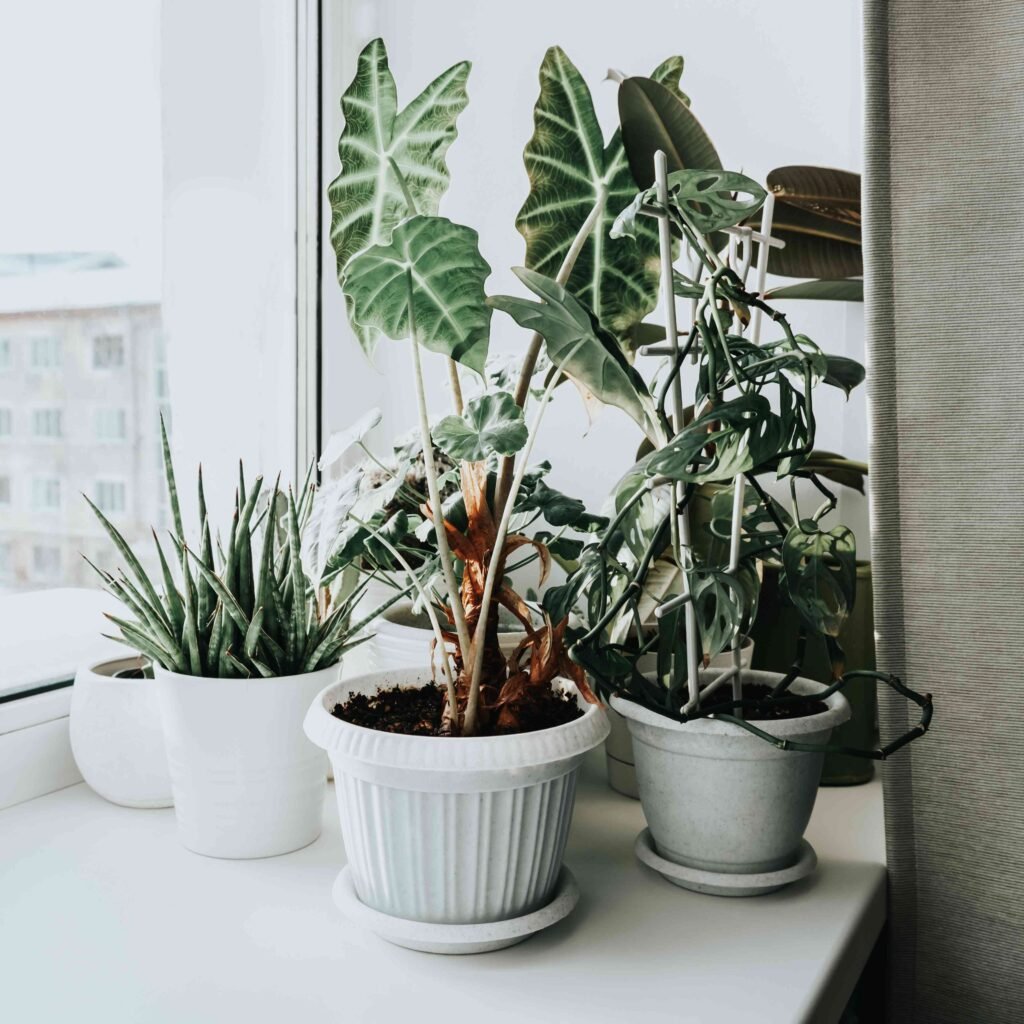
Air conditioners lower the indoor temperature and reduce humidity levels. While this creates a comfortable environment for humans, it can have several negative effects on houseplants:
- Dry air: AC units remove moisture from the air, leading to low humidity levels (often below 40%), which is stressful for tropical and subtropical plants.
- Temperature fluctuations: Air-conditioned rooms can have cool drafts that may shock plants, causing leaf drop or stunted growth.
- Increased water needs: Dry air increases transpiration, causing plants to lose water faster.
- Pest attraction: Stressed plants are more susceptible to pests like spider mites and aphids.
Understanding these effects is crucial for creating a care routine that helps your indoor plants adapt and thrive in AC environments.
2. Choose the Right Plants for Air-Conditioned Rooms
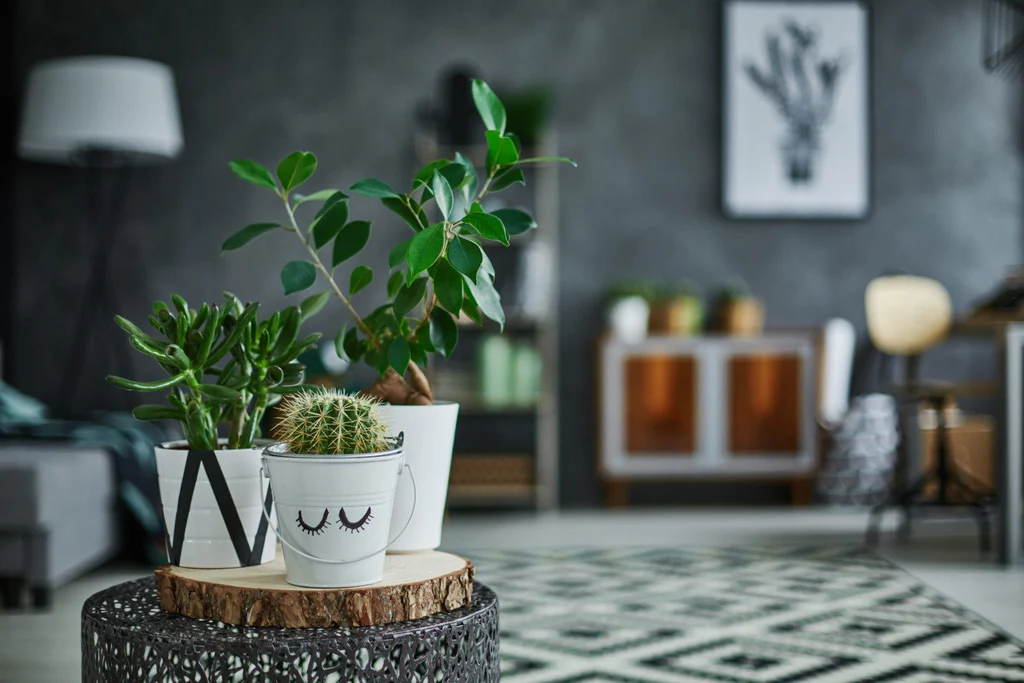
Not all plants tolerate air-conditioned environments equally. Selecting species that are more resilient to low humidity and cooler temperatures increases your chances of success.
Ideal Plant Choices
- Snake Plant (Sansevieria): Extremely tolerant of low humidity and infrequent watering.
- ZZ Plant (Zamioculcas zamiifolia): Thrives in low-light and dry indoor conditions.
- Spider Plant (Chlorophytum comosum): Adaptable and hardy, ideal for air-conditioned spaces.
- Pothos (Epipremnum aureum): A low-maintenance plant that tolerates dry air and cooler temperatures.
- Peace Lily (Spathiphyllum): Prefers moderate humidity but adapts well with proper care.
Avoid plants that require high humidity, like ferns and calatheas, unless you plan to use additional humidity solutions such as pebble trays or humidifiers.
3. Maintain Proper Humidity Levels
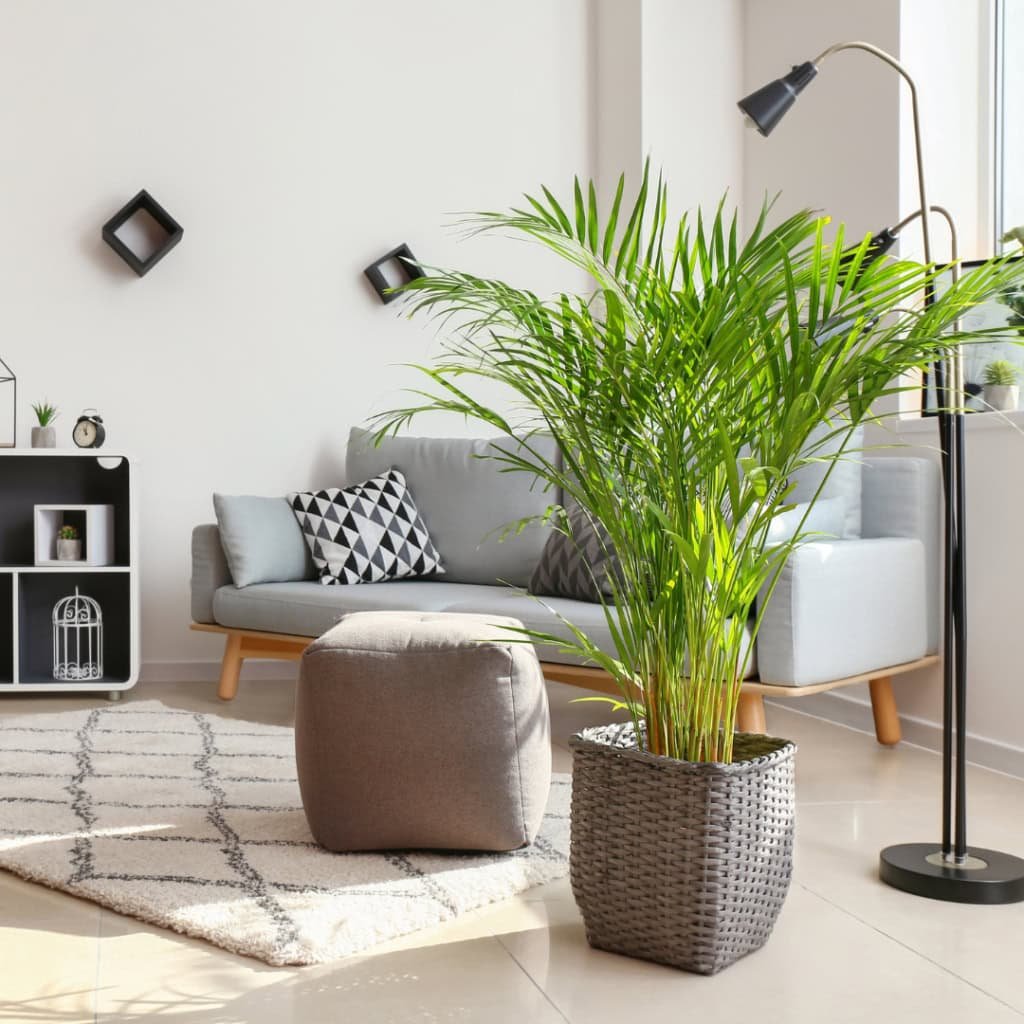
Air conditioners can significantly reduce indoor humidity, which can stress tropical plants. Here’s how to manage humidity effectively:
a. Use Pebble Trays
Place a shallow tray filled with pebbles and water under your plant pots. As the water evaporates, it raises the local humidity around the plants without waterlogging the roots.
b. Group Plants Together
Plants naturally release moisture through transpiration. Grouping several plants together creates a small microclimate with higher humidity.
c. Use Humidifiers
For rooms with very low humidity, small ultrasonic or cool-mist humidifiers can maintain a stable level of moisture, especially beneficial for ferns, orchids, and calatheas.
d. Occasional Misting
Lightly mist plants once or twice a week. Avoid over-misting, which can cause fungal growth if leaves remain wet for long periods.
Optimal Humidity Range
Most tropical indoor plants thrive at 50–70% humidity. Even a slight increase in room humidity can make a noticeable difference in plant health.
4. Adjust Watering Practices
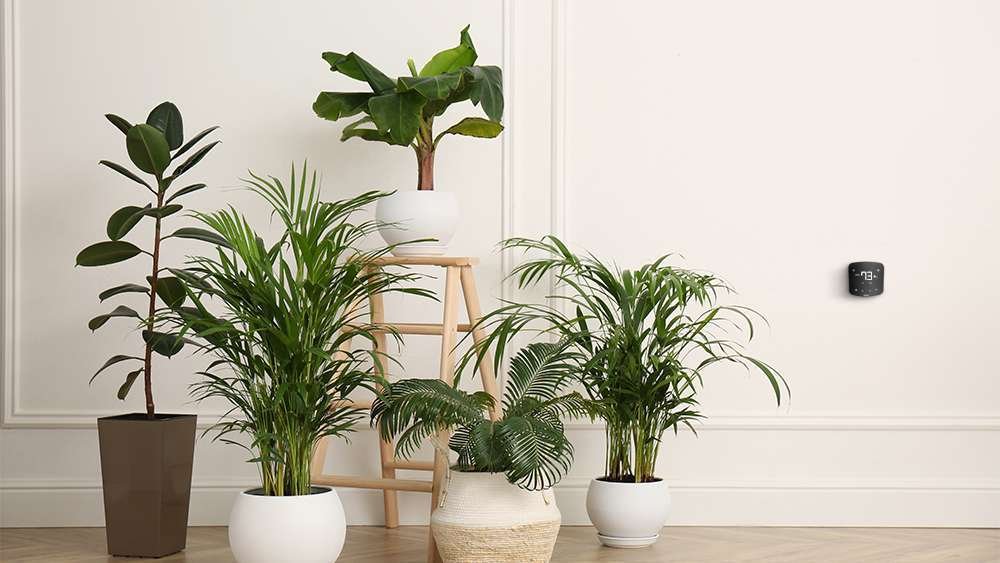
Air conditioning accelerates water loss from soil and leaves. Overwatering is a common mistake, but underwatering can also stress plants in dry conditions.
Tips for Effective Watering
- Check soil moisture: Use your finger or a moisture meter to gauge when watering is needed. Water only when the top inch of soil is dry.
- Water thoroughly: When watering, ensure water reaches the roots, allowing excess to drain out of the pot. Avoid letting the plant sit in stagnant water.
- Use room-temperature water: Cold water can shock roots, while warm water enhances absorption.
- Increase frequency carefully: Dry AC air may require slightly more frequent watering than in natural humidity conditions.
Maintaining consistent soil moisture is key to preventing wilting, brown leaf tips, and stunted growth.
5. Optimize Light Exposure
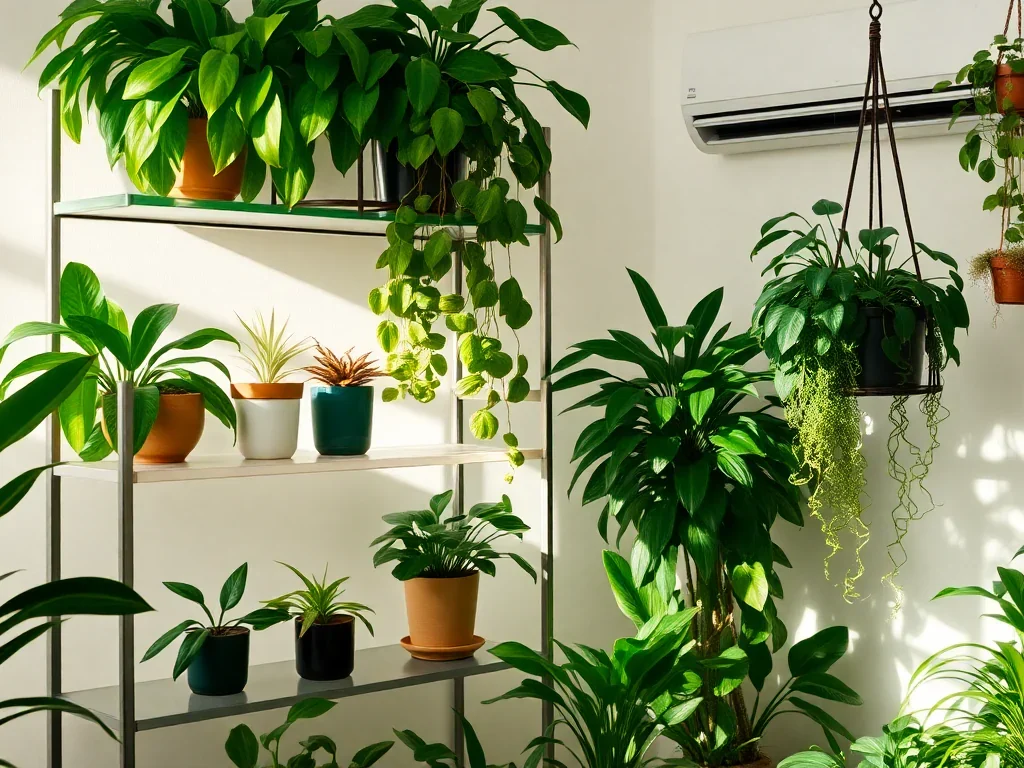
Indoor lighting is often limited in air-conditioned rooms, and AC units can reduce natural light intensity by circulating cool air near windows.
Tips for Adequate Light
- Place plants near bright, indirect light: East or west-facing windows are ideal for most indoor plants.
- Rotate plants regularly: Ensures even growth and prevents leaning toward light sources.
- Supplement with grow lights: LED or fluorescent grow lights can compensate for insufficient natural light, particularly for tropical plants that need moderate brightness.
Proper lighting enhances photosynthesis, helping plants recover from stress caused by dry air.
6. Temperature Management
Sudden temperature fluctuations and cold drafts can harm indoor plants. Here’s how to stabilize temperature:
- Avoid placing plants directly under AC vents: Direct airflow can dry leaves and damage stems.
- Keep plants away from cold drafts: Position plants on shelves, corners, or rooms with moderate airflow.
- Monitor indoor temperature: Most indoor plants thrive between 65–75°F (18–24°C). Extreme cold or hot pockets from AC units can stress plants.
Consistency in temperature ensures healthy growth and reduces vulnerability to pests and diseases.
7. Soil and Pot Considerations
The type of soil and pots you use can impact plant health in air-conditioned rooms:
Soil
- Use well-draining potting mix to prevent waterlogging while retaining adequate moisture.
- Consider mixing perlite or coco coir to improve aeration and water retention.
Pots
- Clay pots: Porous and allow airflow, but dry out faster in AC rooms.
- Plastic pots: Retain moisture longer but may need proper drainage to prevent root rot.
- Choose pots with drainage holes to maintain soil health and prevent stagnant water.
Proper soil and pot selection supports water balance and root health under dry indoor conditions.
8. Preventing Pests and Diseases
Air-conditioned environments can stress plants, making them more susceptible to pests such as spider mites, aphids, and mealybugs.
Natural Prevention Methods
- Regular inspection: Check leaves, stems, and soil for early signs of pests.
- Neem oil spray: Acts as a natural deterrent for most common indoor pests.
- Clean leaves periodically: Wipe dust off leaves to improve photosynthesis and prevent fungal issues.
- Maintain proper spacing: Avoid overcrowding, which reduces airflow and encourages pest infestations.
Healthy, unstressed plants are naturally more resistant to pests and diseases.
9. Additional Tips for Thriving Indoor Plants in AC Rooms
- Rotate seasonal plants: Some species may tolerate AC better during certain seasons.
- Use reflective surfaces: Mirrors or light-colored walls can enhance indirect light.
- Monitor growth patterns: Adjust care routines if leaves curl, yellow, or drop.
- Use slow-release fertilizers: Boost plant nutrition without excessive watering, which is helpful in dry conditions.
By observing your plants and responding to their needs, you can create an indoor garden that thrives year-round—even in air-conditioned spaces.
10. Conclusion
Keeping indoor plants healthy in air-conditioned rooms requires careful attention to humidity, watering, light, temperature, and soil conditions. While air conditioning can create a challenging environment, with proper adjustments, it is entirely possible to maintain vibrant and thriving plants.
Key takeaways:
- Choose plants that tolerate low humidity and cooler temperatures.
- Use pebble trays, humidifiers, or plant groupings to raise humidity.
- Monitor soil moisture carefully and water appropriately.
- Optimize lighting and protect plants from direct AC drafts.
- Maintain clean leaves and check for pests regularly.
By combining these strategies, you can create a harmonious indoor ecosystem where your plants flourish despite dry air. With a little observation, care, and creativity, air-conditioned rooms can support lush, healthy indoor gardens that enhance your living space aesthetically and emotionally.
Healthy plants in cool, dry air not only thrive—they also enrich your home environment with oxygen, vibrancy, and a touch of nature’s serenity.
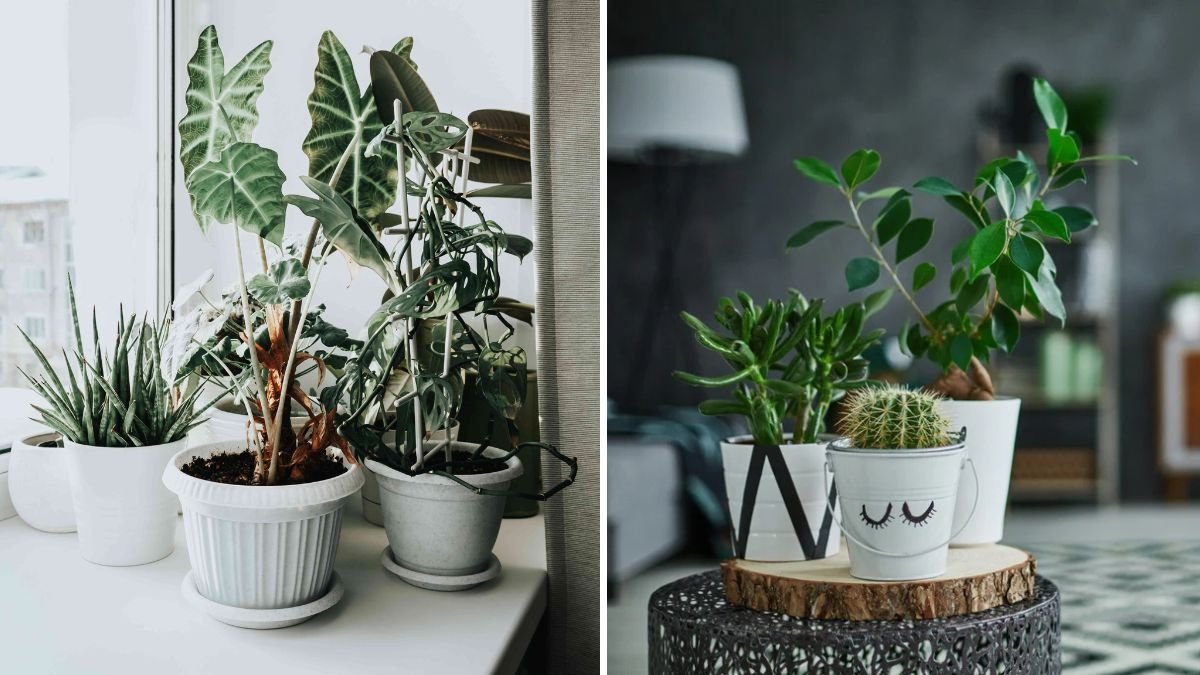




Leave A Comment